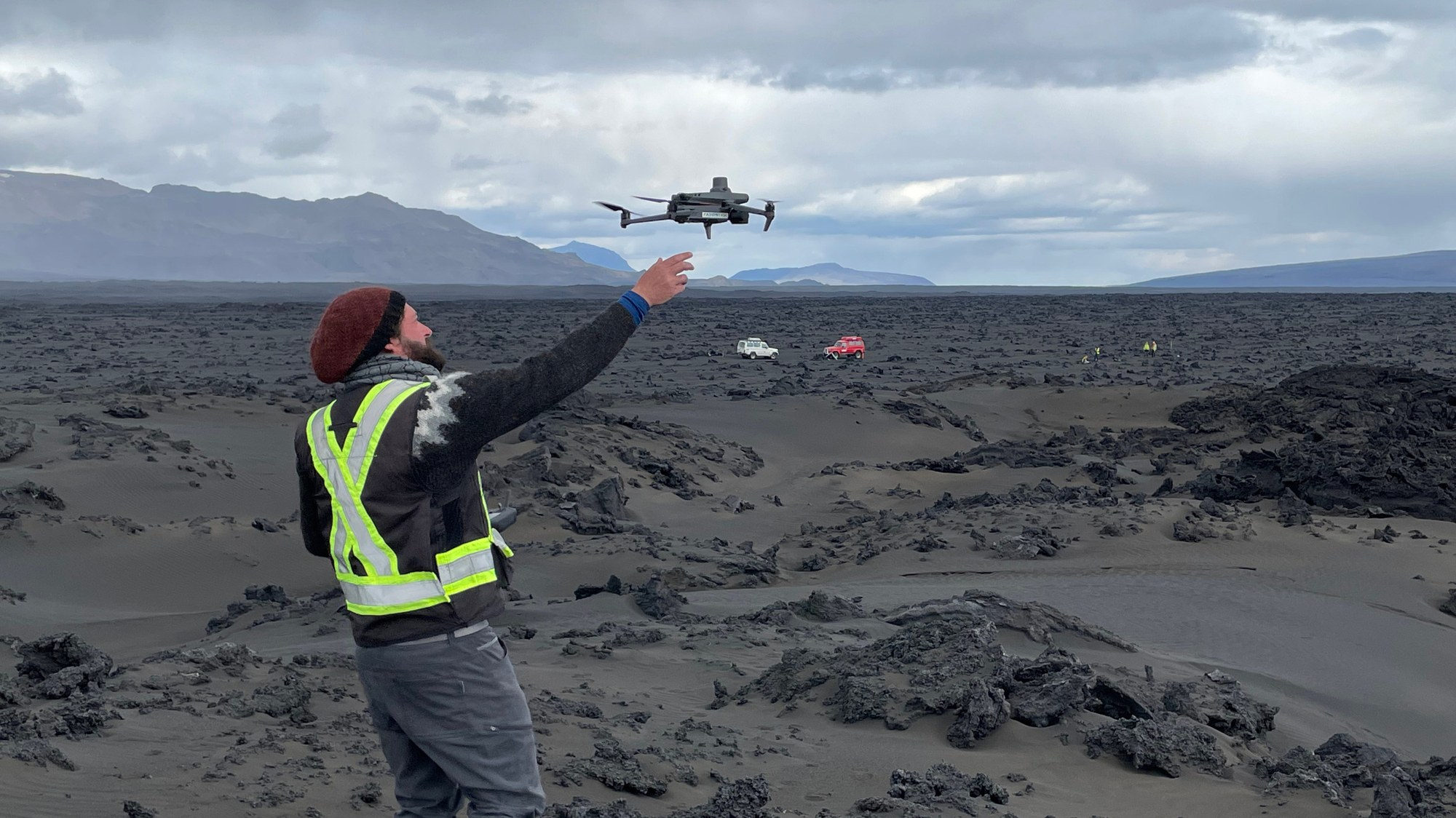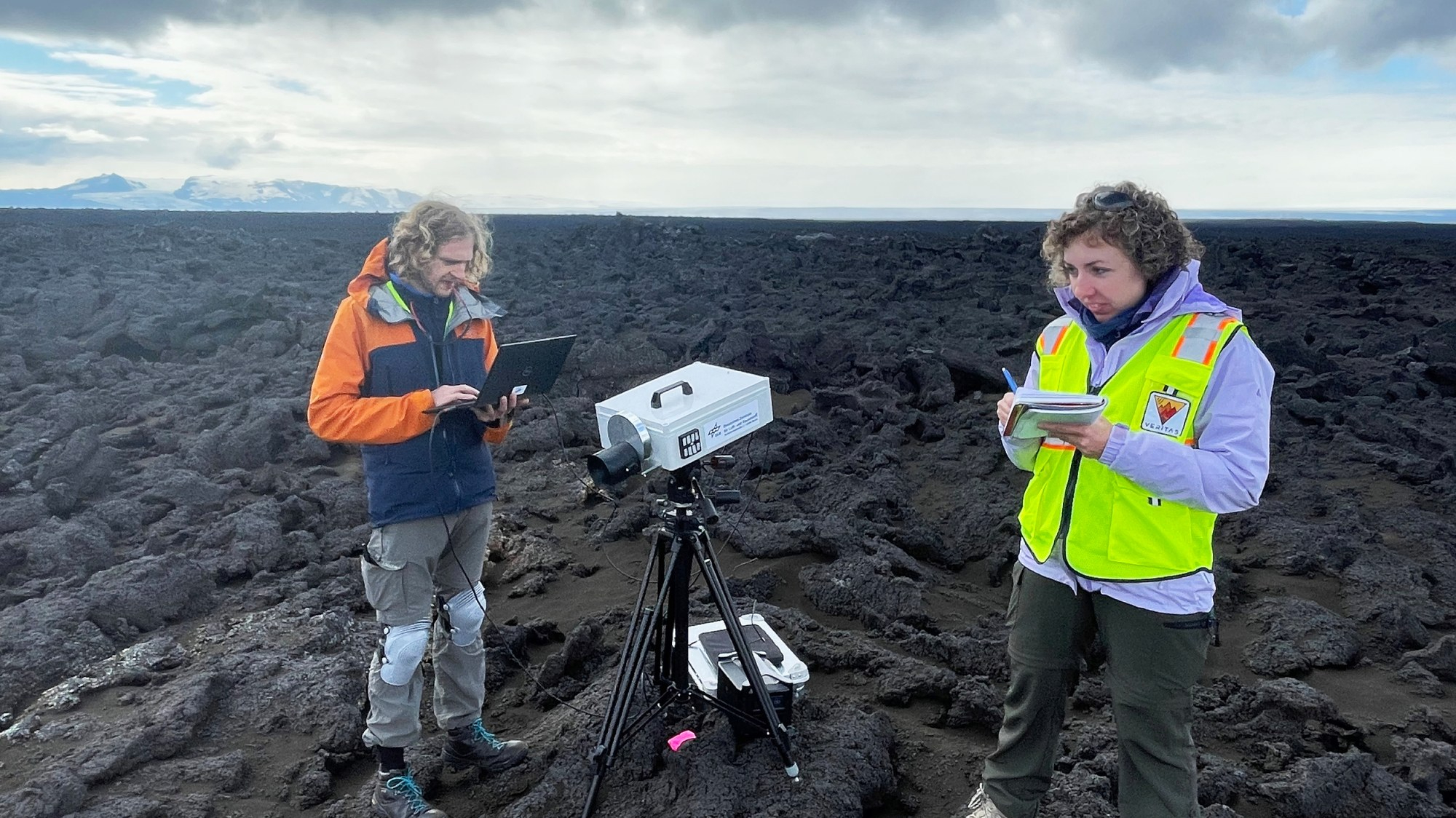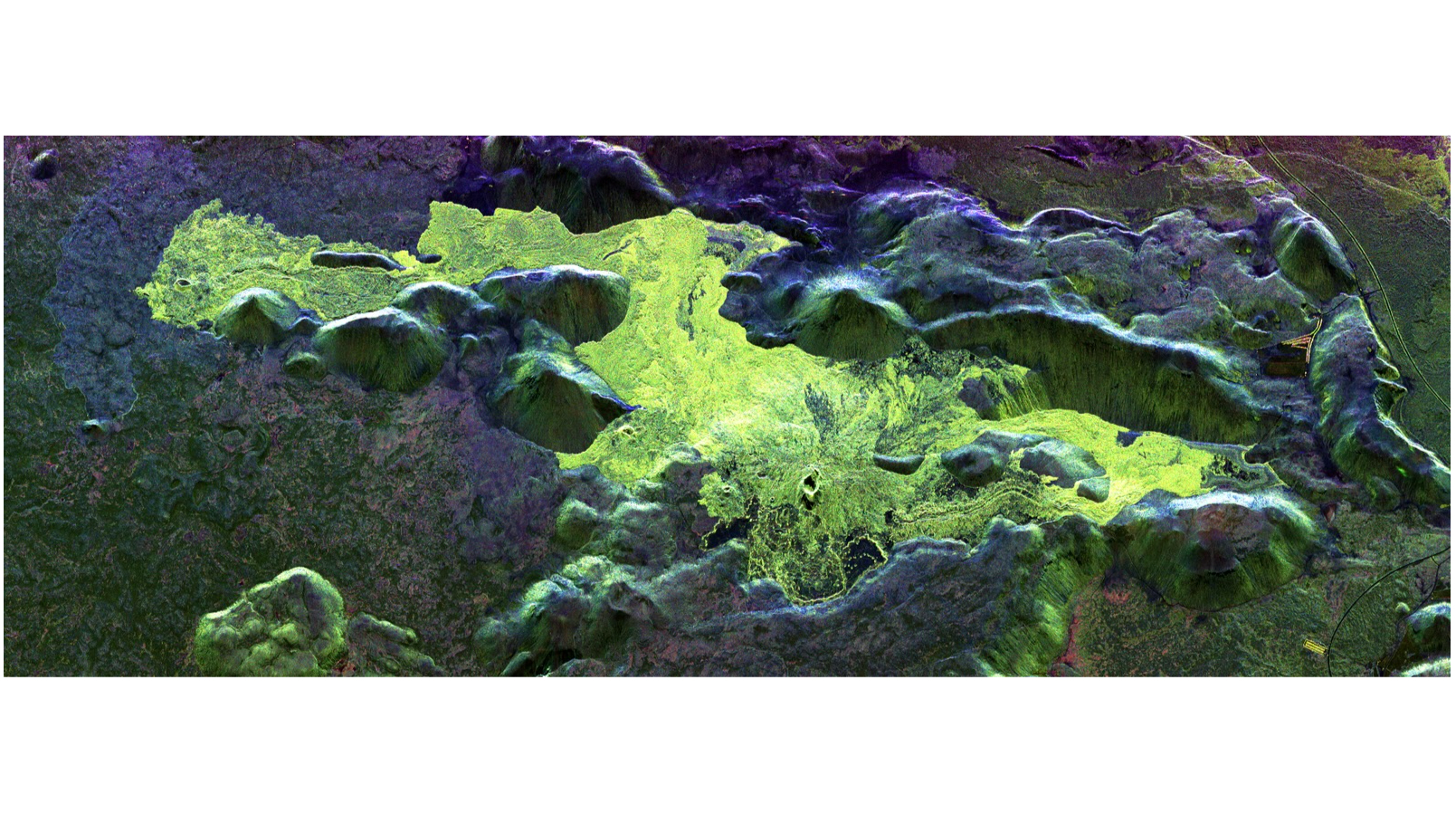Instruments for NASA's VERITAS Venus mission get a test in Iceland (photos)
The German Aerospace Center (DLR), a VERITAS mission partner, is conducting instrument field tests in Iceland.

NASA's VERITAS Venus mission might be on hold, but team members continue to test out its gear here on Earth.
The German Aerospace Center (known by the German acronym DLR), a VERITAS mission partner, is conducting field tests in Iceland this summer, using its airborne F-SAR radar sensor and an infrared imager called V-EMulator to study lava flows. As Venus is expected to have a volcanic surface, the volcanic landscapes of Iceland serve as a strong analog for what VERITAS might find on our neighboring planet.
"Characterizing and measuring the extent and type of volcanic and tectonic processes on Venus is key to understanding the evolution of the surface of Venus and rocky planets in general," Sue Smrekar, the principal investigator for VERITAS at NASA's Jet Propulsion Laboratory (JPL) in Southern California, said in a statement.
Related: Here's every successful Venus mission humanity has ever launched

During two weeks of field operations, scientists and researchers from DLR and JPL will use the F-SAR radar system mounted on DLR's Dornier 228-212 aircraft to collect imaging data from Iceland's surface. Simultaneously, teams are collecting data and samples on the ground for laboratory analysis to supplement the radar data.
DLR is also testing V-EMulator, a prototype for the eventual Venus Emissivity Mapper that will be installed on VERITAS (whose name is short for "Venus Emissivity, Radio Science, InSAR, Topography And Spectroscopy").
"This will be of tremendous help to us in characterizing the mineralogical composition and origin of the major geologic terrains on the Venusian surface when VEM delivers 'true' Venus data during the mission phase," Solmaz Adeli, of DLR's Institute of Planetary Research, said in the same statement.
Get the Space.com Newsletter
Breaking space news, the latest updates on rocket launches, skywatching events and more!

NASA intended VERITAS to launch in 2027, but due to institutional troubles at JPL, among other issues, the mission has been delayed indefinitely. It is expected that VERITAS might launch in the early 2030s, though mission funding has been reduced and further delays might occur.
The agency is also developing another Venus mission, called DAVINCI ("Deep Atmosphere Venus Investigation of Noble gases, Chemistry, and Imaging"), which is scheduled to reach the planet in the early 2030s. Europe's EnVision probe, another Venus effort, is expected to get off the ground in that same general time frame as well.
As these three missions show, scientific interest in the second planet from the sun has surged over the past few years. Researchers increasingly view Venus as a possible abode for life, both in the ancient past and in the present day. Life as we know it cannot exist on the planet's scorching-hot surface today, but conditions about 30 miles (50 kilometers) up in the clouds are much more Earth-like.
Join our Space Forums to keep talking space on the latest missions, night sky and more! And if you have a news tip, correction or comment, let us know at: community@space.com.

Space.com contributing writer Stefanie Waldek is a self-taught space nerd and aviation geek who is passionate about all things spaceflight and astronomy. With a background in travel and design journalism, as well as a Bachelor of Arts degree from New York University, she specializes in the budding space tourism industry and Earth-based astrotourism. In her free time, you can find her watching rocket launches or looking up at the stars, wondering what is out there. Learn more about her work at www.stefaniewaldek.com.









